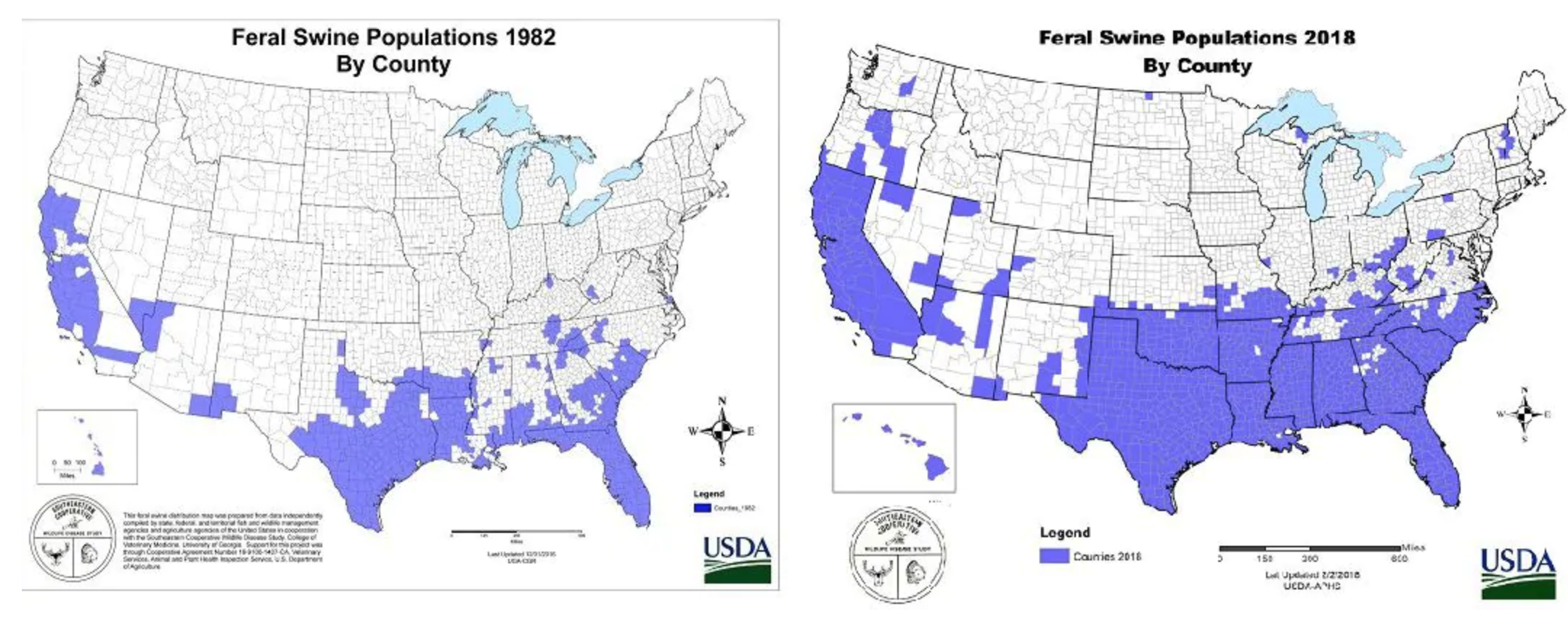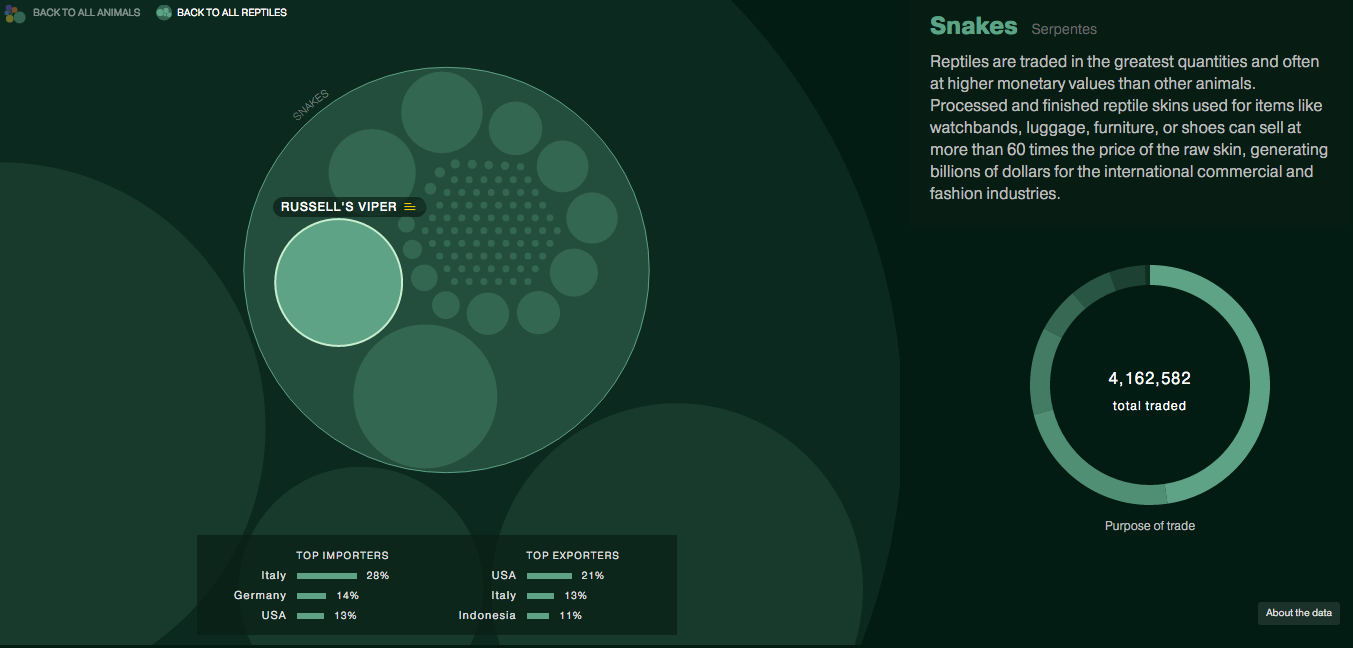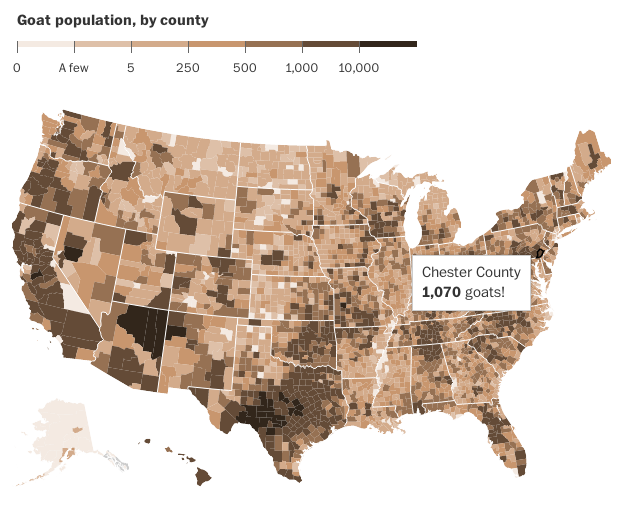So admittedly this post should have been up last week, but I liked the lunar cycle one too much. But today is Friday and who cares. We made it to the end of the week.
In the wake of the shootings last week, someone on Twitter posed the question:
Legit question for rural Americans – How do I kill the 30-50 feral hogs that run into my yard within 3-5 mins while my small kids play?
And with that the Internet was off. Memes exploded across the social media verse. Thankfully the Washington Post took it seriously and found data on the expanding footprint of hogs in the United States.

The article also points out, however, that the firearm that prompted the discussion, the now infamous AR-15, would also be a poor choice against feral hogs as its too small a calibre to effectively deal with the animals.
Credit for the piece goes to the US Department of Agriculture.




